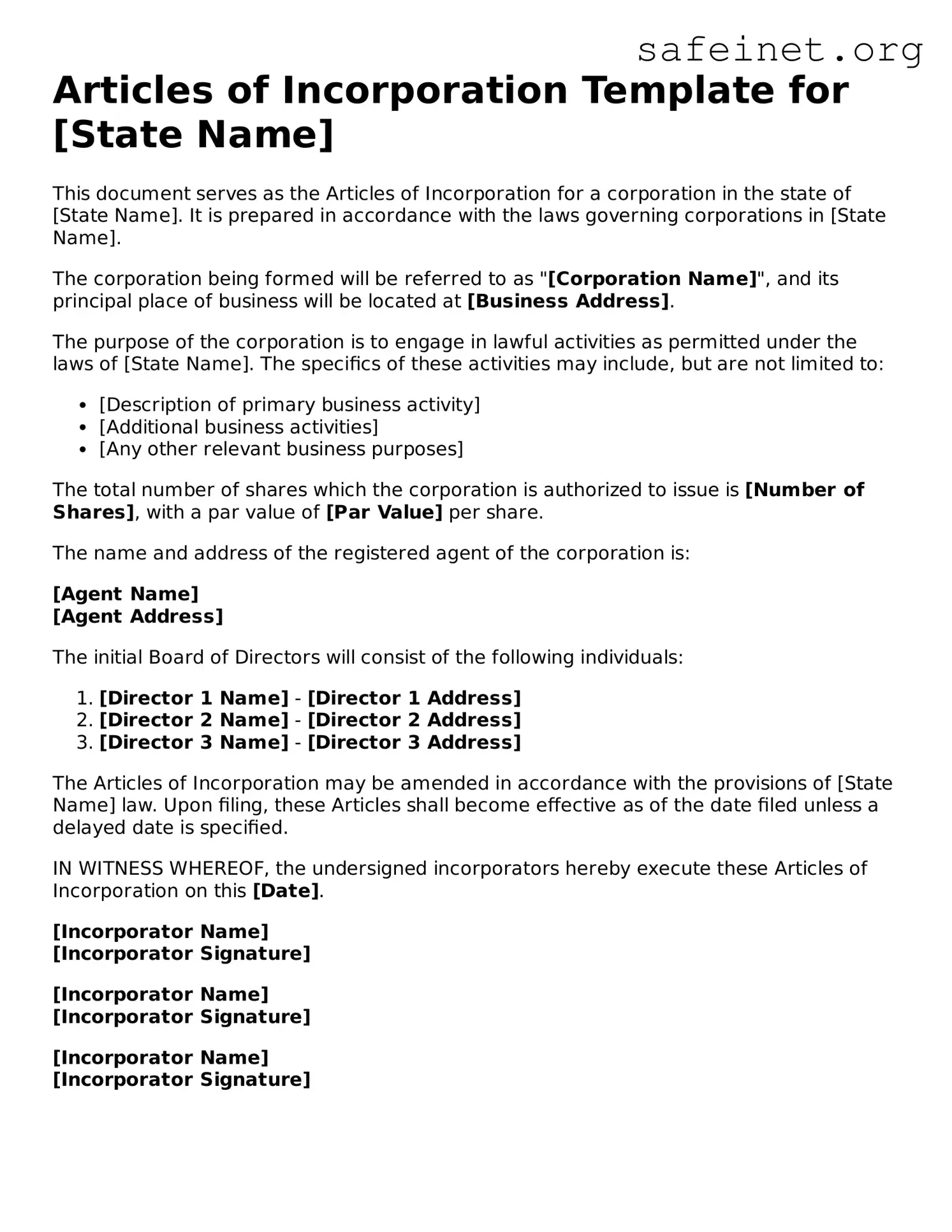Articles of Incorporation Template for [State Name]
This document serves as the Articles of Incorporation for a corporation in the state of [State Name]. It is prepared in accordance with the laws governing corporations in [State Name].
The corporation being formed will be referred to as "[Corporation Name]", and its principal place of business will be located at [Business Address].
The purpose of the corporation is to engage in lawful activities as permitted under the laws of [State Name]. The specifics of these activities may include, but are not limited to:
- [Description of primary business activity]
- [Additional business activities]
- [Any other relevant business purposes]
The total number of shares which the corporation is authorized to issue is [Number of Shares], with a par value of [Par Value] per share.
The name and address of the registered agent of the corporation is:
[Agent Name]
[Agent Address]
The initial Board of Directors will consist of the following individuals:
- [Director 1 Name] - [Director 1 Address]
- [Director 2 Name] - [Director 2 Address]
- [Director 3 Name] - [Director 3 Address]
The Articles of Incorporation may be amended in accordance with the provisions of [State Name] law. Upon filing, these Articles shall become effective as of the date filed unless a delayed date is specified.
IN WITNESS WHEREOF, the undersigned incorporators hereby execute these Articles of Incorporation on this [Date].
[Incorporator Name]
[Incorporator Signature]
[Incorporator Name]
[Incorporator Signature]
[Incorporator Name]
[Incorporator Signature]
